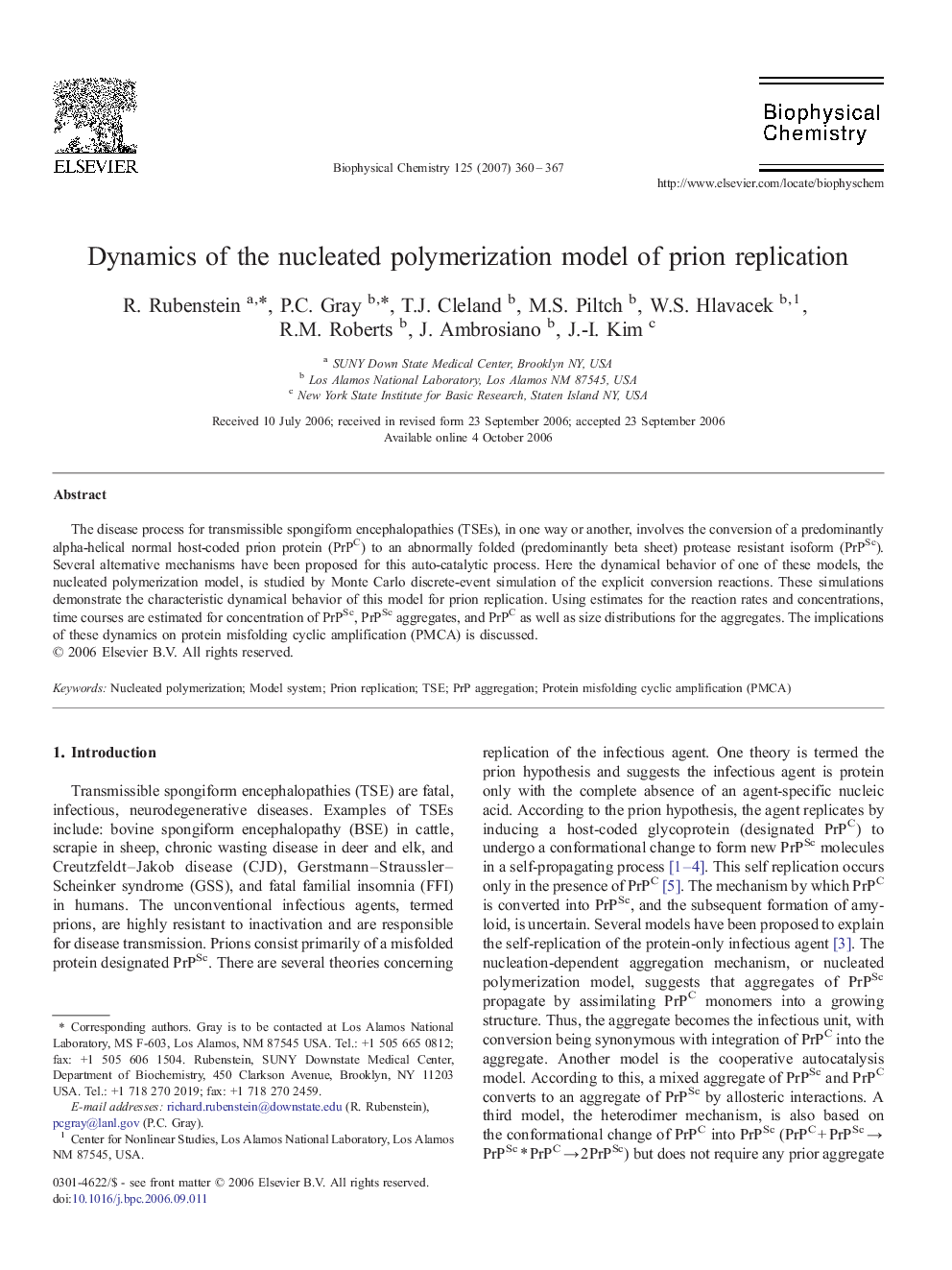| Article ID | Journal | Published Year | Pages | File Type |
|---|---|---|---|---|
| 5372289 | Biophysical Chemistry | 2007 | 8 Pages |
The disease process for transmissible spongiform encephalopathies (TSEs), in one way or another, involves the conversion of a predominantly alpha-helical normal host-coded prion protein (PrPC) to an abnormally folded (predominantly beta sheet) protease resistant isoform (PrPSc). Several alternative mechanisms have been proposed for this auto-catalytic process. Here the dynamical behavior of one of these models, the nucleated polymerization model, is studied by Monte Carlo discrete-event simulation of the explicit conversion reactions. These simulations demonstrate the characteristic dynamical behavior of this model for prion replication. Using estimates for the reaction rates and concentrations, time courses are estimated for concentration of PrPSc, PrPSc aggregates, and PrPC as well as size distributions for the aggregates. The implications of these dynamics on protein misfolding cyclic amplification (PMCA) is discussed.
